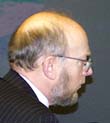RF Cascade Workbook for Excel
RF & Electronics Symbols for Visio
RF & Electronics Symbols for Office
RF & Electronics Stencils for Visio
RF Workbench
T-Shirts, Mugs, Cups, Ball Caps, Mouse Pads
Espresso Engineering Workbook™
Smith Chart™ for Excel
|
|
Cable Loss Measurement - RF Cafe Forums
|
| robh001
|
|
Post subject: Cable Loss Measurement
Posted: Mon Jan 28, 2008 11:31 am
|
|
| |
| Lieutenant |
 |
Joined: Mon Jan 28, 2008
11:25 am
Posts: 2 |
|
Hi,
If I wanted to find the attenuation
of a cable at 1.6Ghz how would I go about this.
What equipment would I need. Is there a realtively
inexpensive way to do this.
Thanks for any
help,
Rob
|
|
| |
|
 |
|
IR |
|
Post subject:
Posted: Mon Jan 28, 2008 12:03 pm
|
|
| |
| Site Admin |
 |
Joined: Mon Jun 27, 2005
2:02 pm
Posts: 406
Location: Germany
|
|
Hello robh001,
You will need eith 1 of the
following setups:
1. Vector Network Analyzer
(VNA) - more expensive.
You should calibrate
the VNA - insertion loss calibration would be enough
(Through standard only) at 1.6GHz. Following that,
connect the measured cable between the VNA's ports
and measure S21. The result is the insertion loss
of the cable.
2. A Signal generator and
power meter - less expensive.
Calibrate
the power meter. Se the frequency of the power meter
to 1.6GHz, Then connect the measured cable on one
side to the signal generator and on the other side
to the power meter. Set the signal generator for
frequency of 1.6GHz and output power of 0dBm and
read the power, the result is the insertion loss
(In absolute value).
|
|
| |
|
 |
|
robh001 |
|
Post subject:
Posted: Tue Jan 29, 2008 11:35 am
|
|
| |
| Lieutenant |
 |
Joined: Mon Jan 28, 2008
11:25 am
Posts: 2 |
|
Thanks IR,
The second way sounds more cost
effective, if I was to get a signal generator to
go to 1Ghz, how could I check the loss at 1.6Ghz,
is there a way of check a few different values,
and then apply to a formula?
Thanks again,
Rob
|
|
| |
|
 |
|
nubbage |
|
Post subject:
Posted: Tue Jan 29, 2008 12:20 pm
|
|
| |
| General |
 |
Joined: Fri Feb 17, 2006
12:07 pm
Posts: 268
Location: London UK
|
|
Hi Rob
Sure: plot the loss from about 800MHz
to 1GHz in 50MHz intervals, then draw a graph leaving
enough space at the right-hand side to extend the
curve to 1.6GHz.
Then extrapolate the values
out to 1.6GHz. Cables generally have a smooth well-behaved
curve so this approach is quite accurate. However,
it becomes much less accurate as you approach the
frequency where the first cylindrical waveguide
mode can form.
I have a formula for cable loss
somewhere. I will see if I can dig it out.
|
|
Posted 11/12/2012
|
|

Copyright: 1996 - 2024
Webmaster:
Kirt
Blattenberger,
BSEE - KB3UON
RF Cafe began life in 1996 as "RF Tools" in an AOL screen name web space totaling
2 MB. Its primary purpose was to provide me with ready access to commonly needed
formulas and reference material while performing my work as an RF system and circuit
design engineer. The World Wide Web (Internet) was largely an unknown entity at
the time and bandwidth was a scarce commodity. Dial-up modems blazed along at 14.4 kbps
while tying up your telephone line, and a nice lady's voice announced "You've Got
Mail" when a new message arrived...
|
All trademarks, copyrights, patents, and other rights of ownership to images
and text used on the RF Cafe website are hereby acknowledged.
|
|
All trademarks, copyrights, patents, and other rights of ownership to images
and text used on the RF Cafe website are hereby acknowledged.
My Hobby Website: AirplanesAndRockets.com
My Daughter's Website: EquineKingdom
|
|
|
|




